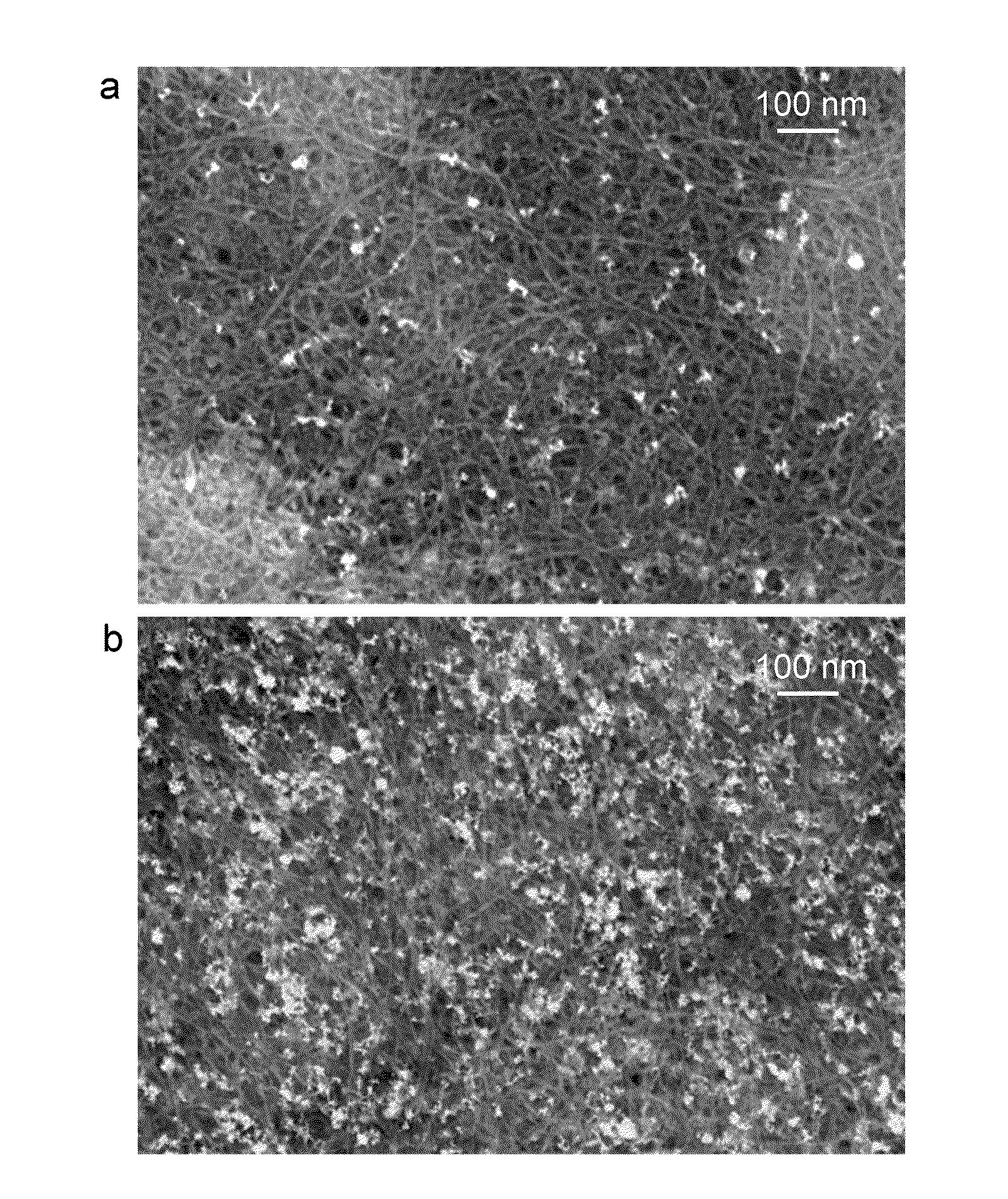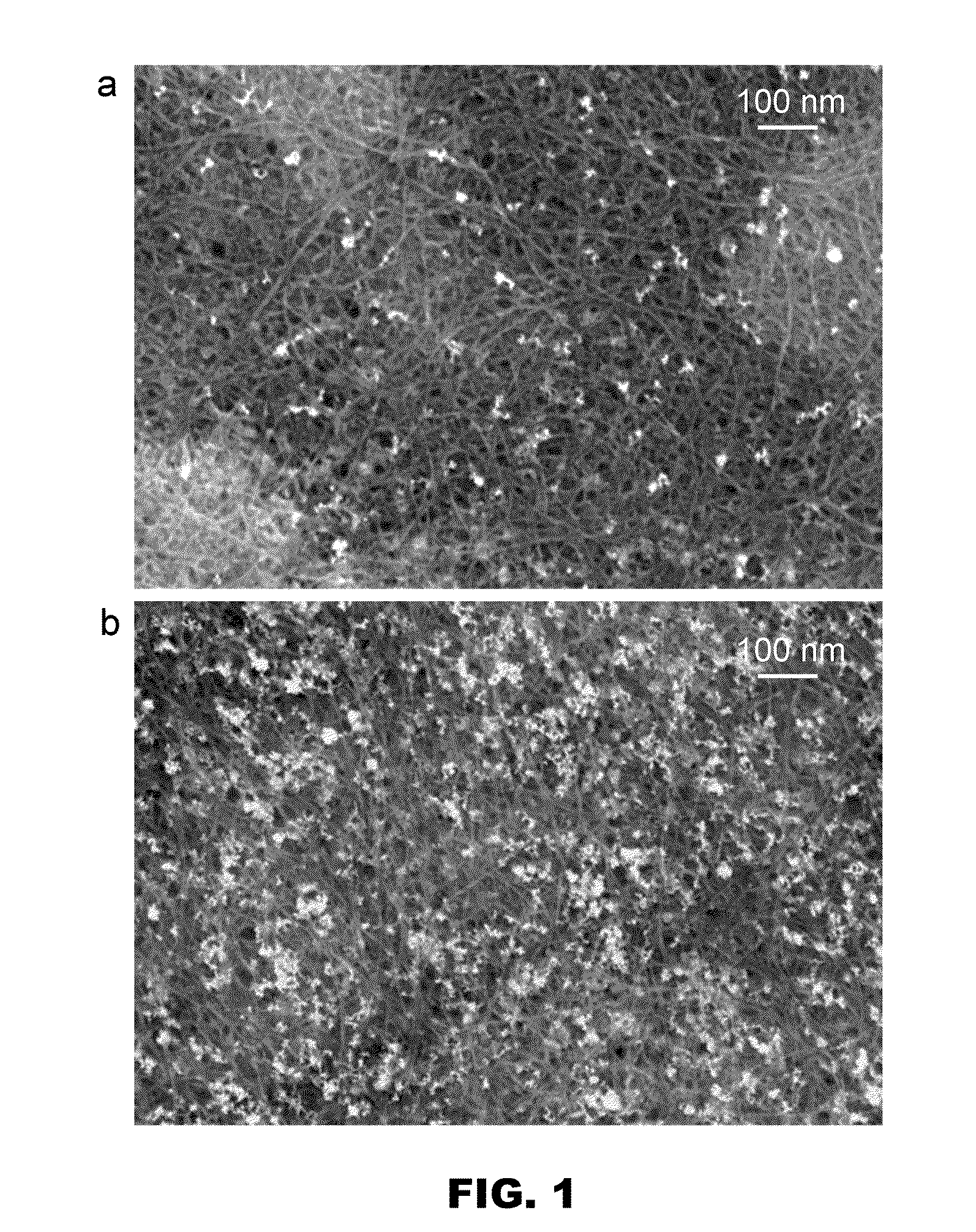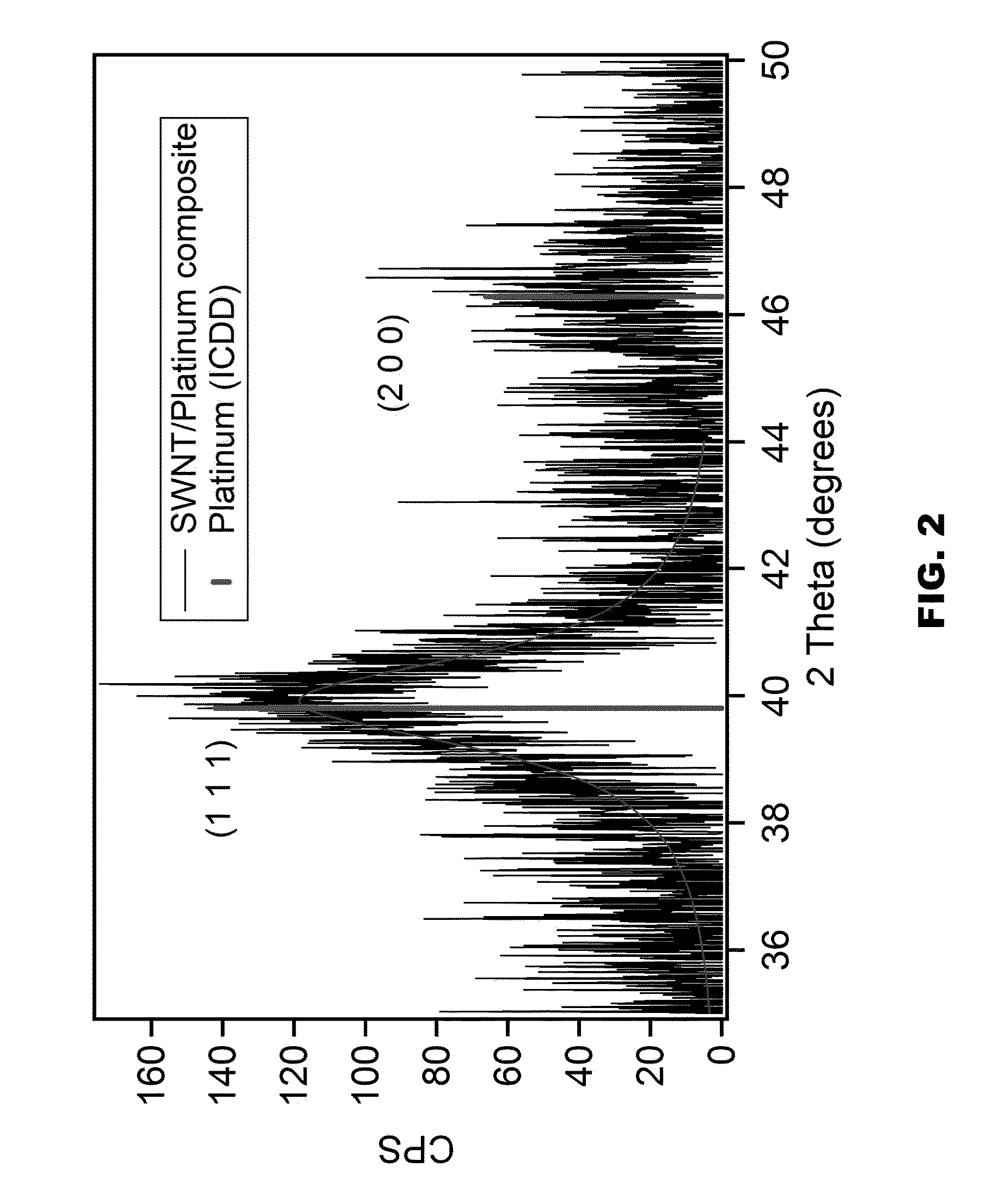Multifunctional Nanocomposites of Carbon Nanotubes and Nanoparticles Formed Via Vacuum Filtration
a technology of carbon nanotubes and nanoparticles, which is applied in the field of nanotubes and nanoparticles, can solve the problems of unaddressed need in the ar
- Summary
- Abstract
- Description
- Claims
- Application Information
AI Technical Summary
Benefits of technology
Problems solved by technology
Method used
Image
Examples
example 1
Platinum-CNT Nanocomposites
[0086]In one embodiment of the present invention, it is demonstrated an alternative method for producing nanocomposite films of single-walled carbon nanotubes (SWNTs) and platinum nanoparticles. In this embodiment, SWNTs and platinum nanoparticles are concurrently deposited from aqueous solution using vacuum filtration through a nanoporous membrane. The surfactants that enable SWNT and platinum nanoparticle dispersion in aqueous solution are removed via a straightforward rinsing procedure, thus resulting in an interconnected, porous network of SWNTs and platinum nanoparticles. In an effort to verify that residual surfactants do not compromise the electronic coupling between the SWNTs and the platinum nanoparticles, extensive characterization of these nanocomposite films is undertaken including X-ray diffraction, electron microscopy, optical spectroscopy, Raman spectroscopy, electrical conductivity measurements, and cyclic voltammetry. These nanocomposite f...
example 2
Use of Platinum-CNT Nanocomposites as a Cathode in Dye-Sensitized Solar Cells
[0096]In another embodiment of the present invention, the film of nanocomposites of CNTs and Pt nanoparticles made by the method described in Example 1 or a method similar to it [39] was tested for possible use as a cathode in dye-sensitized solar cells (DSSCs). DSSCs were made using commercially available dyes and protocol developed by Solaronix. Pt / SWNT nanocomposite thin film electrodes were compared to standard cathodes fabricated from Solaronix Platisol T platinum precursor. The anode configuration and electrolyte were held constant in both cases. DSSCs made with the Pt-SWNT nanocomposite electrode show about 10% improvement in efficiency (FIG. 8, left). Scanning electron microscope (SEM) images (FIG. 8, right) of the electrodes show that the Pt nanoparticles in the Pt-SWNT nanocomposite electrode are sub-10 nm sized compared to the much larger platinum particles resulting from the Platisol precursor. ...
example 3
TiO2-CNT Nanocomposites
[0097]It has been established [40] that the addition of SWNTs to titanium dioxide (TiO2) improves photocatalytic activity via two distinct mechanisms. First, the SWNTs extract electrons from excitons generated by light absorption in TiO2, ensuring longer carrier lifetimes and improved catalytic activity. Second, SWNTs decrease the optical bandgap, thus enabling absorption of light at longer wavelengths and enabling enhanced reactivity with visible illumination.
[0098]In yet another embodiment of the present invention, nanocomposites were fabricated from commercially available anatase (25 nm diameter spherical) and rutile (40 nm diameter×100 nm long cylindrical) TiO2 nanoparticles (Sigma), and CoMoCAT SWNTs (SWeNT). Both materials were suspended in sodium dodecyl sulfate (SDS) via sonication with a density of 0.5 mg / ml and 1 mg / ml respectively. Thin films were made from a 5 to 1 mass ratio of TiO2 to SWNTs by vacuum filtration onto 200 nm pore anodisc membranes....
PUM
| Property | Measurement | Unit |
|---|---|---|
| pore size | aaaaa | aaaaa |
| pore size | aaaaa | aaaaa |
| diameter | aaaaa | aaaaa |
Abstract
Description
Claims
Application Information
 Login to View More
Login to View More - R&D
- Intellectual Property
- Life Sciences
- Materials
- Tech Scout
- Unparalleled Data Quality
- Higher Quality Content
- 60% Fewer Hallucinations
Browse by: Latest US Patents, China's latest patents, Technical Efficacy Thesaurus, Application Domain, Technology Topic, Popular Technical Reports.
© 2025 PatSnap. All rights reserved.Legal|Privacy policy|Modern Slavery Act Transparency Statement|Sitemap|About US| Contact US: help@patsnap.com



